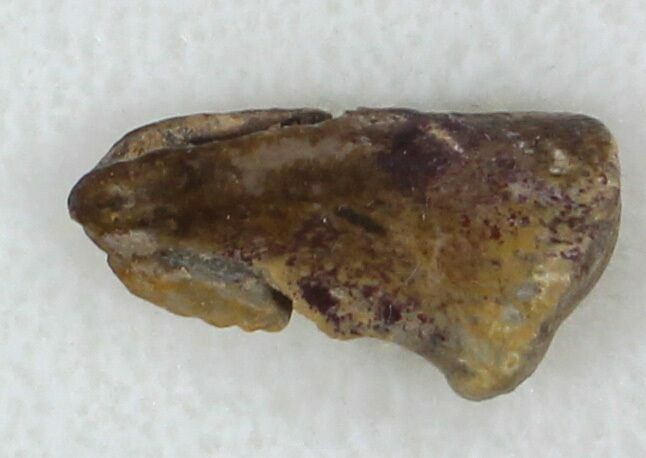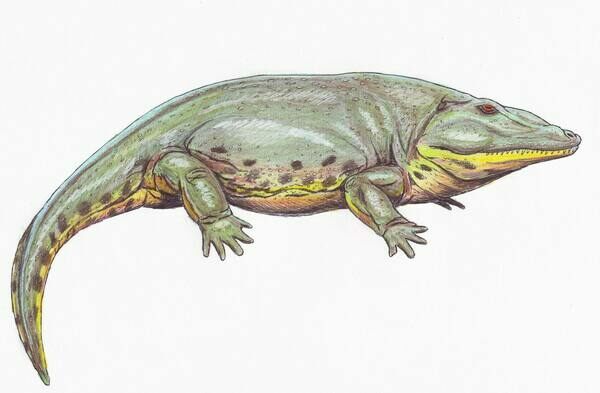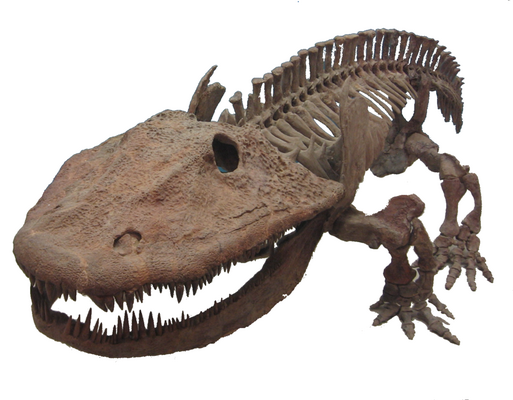This Specimen has been sold.
.63" Eryops Claw From Oklahoma - Giant Permian Amphibian
This is a fossilized claw of Eryops, a primitive amphibian from the Lower Permian. It was collected from the Ryan Formation in Oklahoma and comes in an acrylic display case.
Eryops, maining “drawn-out face”, was a primitive amphibious temnospondyls that lived about 295 million years ago. While a handful of complete skeletons have been found, teeth are the most common fossil. Its fossils are primarily found in Texas, Oklahoma, and New Mexico.
Eryops averaged around 5 to 7 feet long, but could grow up to 10 feet, making them the largest land animals living at the time. They had a large, broad, flat skull with a large mouth and many slightly curved teeth. Its teeth had enamel with a folded pattern, leading to its early classification as a "labyrinthodont" ("maze toothed"). The shape and cross section of these teeth made them exceptionally strong and resistant to stresses. The palate, or roof of the mouth, contained three pairs of backward-curved fangs, and was covered in backward-pointing bony projections that would have been used to trap slippery prey once caught. This, coupled with the wide gape, suggest an inertial method of feeding, in which the animal would grasp its prey and thrust forward, forcing the prey farther back into its mouth.
Like other large primitive temnospondyls, Eryops would have grown slowly and gradually from aquatic larvae, but they did not go through a dramatic metamorphosis like many modern amphibians. While adults probably lived in ponds and rivers or may have ventured onto their banks, juvenile Eryops may have lived in swamps, which may have offered more shelter from predators.
Eryops averaged around 5 to 7 feet long, but could grow up to 10 feet, making them the largest land animals living at the time. They had a large, broad, flat skull with a large mouth and many slightly curved teeth. Its teeth had enamel with a folded pattern, leading to its early classification as a "labyrinthodont" ("maze toothed"). The shape and cross section of these teeth made them exceptionally strong and resistant to stresses. The palate, or roof of the mouth, contained three pairs of backward-curved fangs, and was covered in backward-pointing bony projections that would have been used to trap slippery prey once caught. This, coupled with the wide gape, suggest an inertial method of feeding, in which the animal would grasp its prey and thrust forward, forcing the prey farther back into its mouth.
Like other large primitive temnospondyls, Eryops would have grown slowly and gradually from aquatic larvae, but they did not go through a dramatic metamorphosis like many modern amphibians. While adults probably lived in ponds and rivers or may have ventured onto their banks, juvenile Eryops may have lived in swamps, which may have offered more shelter from predators.
SPECIES
Eryops megacephalus
AGE
LOCATION
Waurika, Oklahoma
FORMATION
Ryan Formation
SIZE
.63" long
CATEGORY
SUB CATEGORY
ITEM
#33601
We guarantee the authenticity of all of our specimens.
 Reviews
Reviews














